Artnet News Pro
With the Limelight Stolen by Figurative Painting, a Softening Market for Photography Shifts Toward Conceptual Fare
Mixed results at Paris Photo and Christie's this month signal changing tastes.
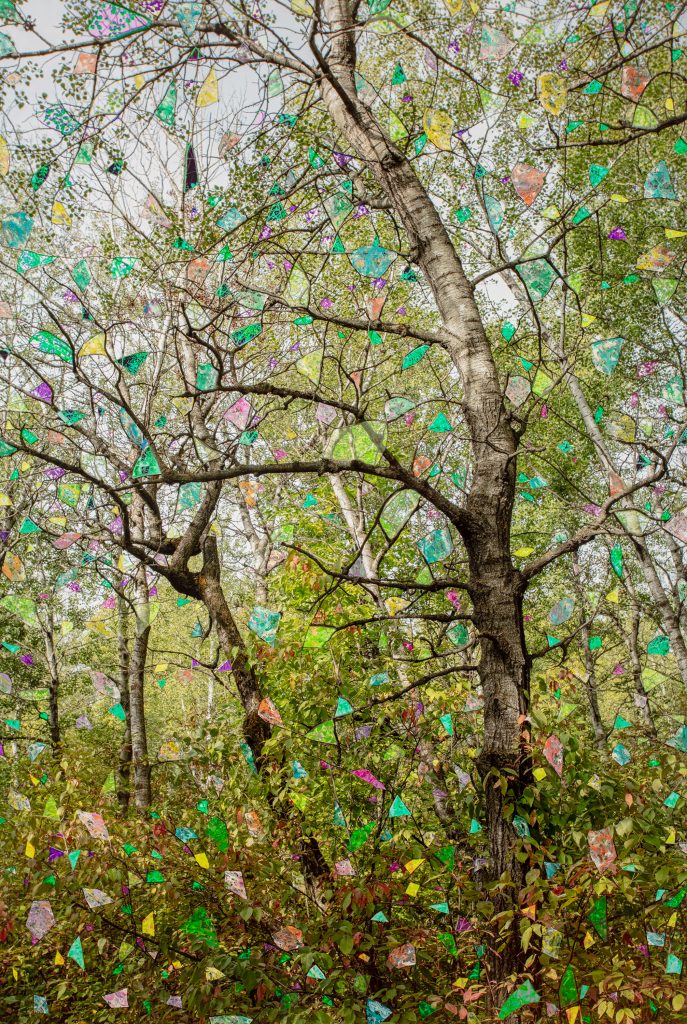
Mixed results at Paris Photo and Christie's this month signal changing tastes.

Anna Sansom

While eyes have been trained on major auctions of modern and contemporary art in New York this month, November has also so far proved a test of the photography market in Paris, with the 24th edition of the Paris Photo fair and Christie’s—but not Sotheby’s—holding a fall photograph sale.
Paris Photo, which unfolded at the Grand Palais Ephémère from November 11 to 14, is one of the few fairs devoted to the genre. It was, once again, a mecca for photographs from the dawn of the medium to the present, which brought together 162 galleries and 28 publishers from 30 countries.
Although photographic work was the focus, some dealers conceded that the category is currently out of the market limelight in a broader sense, overtaken by demand for figurative painting at auction and at contemporary art fairs. Several contemporary art dealers who represent photographers, including Hauser & Wirth, Templon, and Goodman, skipped this year’s edition, as did regulars Danziger Gallery and Robert Koch—but Gagosian, Karsten Greve, Pace, and Nathalie Obadia were present.
“It’s hard for artists working with photography; people want figurative painting,” Yossi Milo, who had made the trip from New York, told Artnet News. He cited the success of emerging painters Salman Toor and Louis Fratino, whose works have quickly entered the secondary market and seen six-figure success at auction.
“What is hurting photography is the immediacy of the phone, looking at hundreds and thousands of photographs each day. Photography doesn’t have the same cachet that it used to,” Milo continued. “This was the case before the pandemic and the pandemic has extended this [situation].” In fact, he believes that interest in photography has been declining since 2009, following the 2008 financial crash.
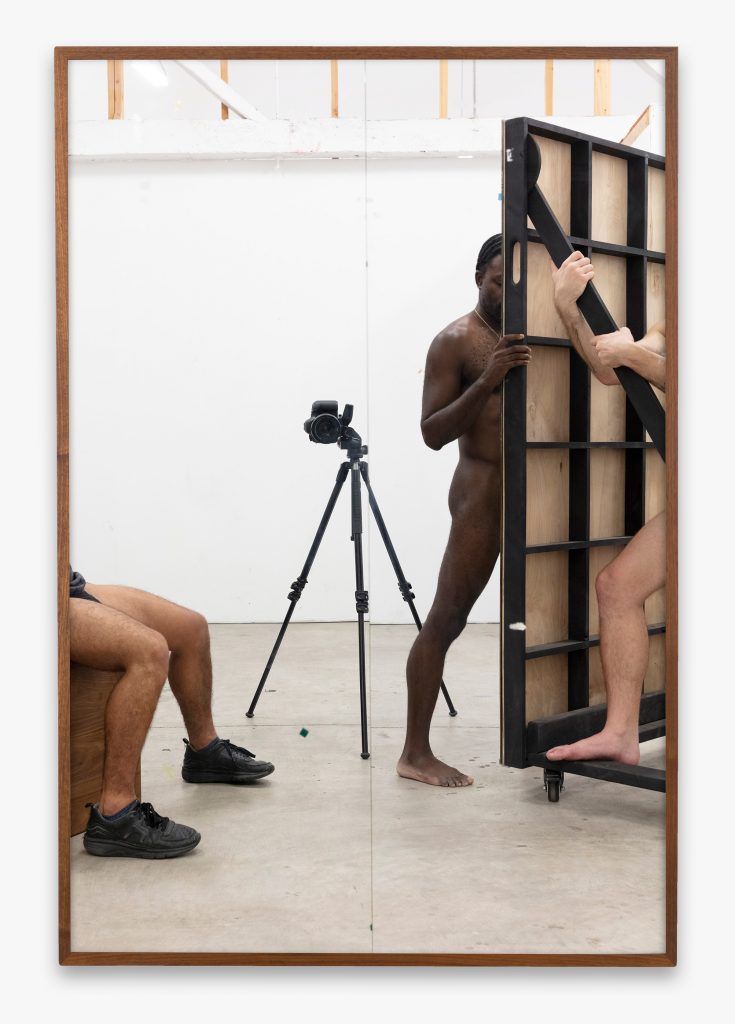
Paul Mpagi Sepuya, Studio (0X5A2260) (2020). Courtesy of Document, Chicago.
Naila Kettaneh-Kunigk, owner of Tanit, in Munich and Beirut, echoed Milo’s sentiments. “Photography is having a rough time right now, and is a bit out of the spotlight, which is why it’s important to have a good fair,” she said. The gallery sold works by Gilbert Hage and Serge Najjar for four-figure sums, and was also showing a photograph of a river by Elger Esser. In an example of lower demand across the category, one of Esser’s landscapes from 2000 brought just €1,000 ($1,130) against an estimate of €10,000 to €15,000 ($11,300–$17,000), the bottom-selling lot in Christie’s November 9 auction of photographs. Brushing any qualms aside, Kettaneh-Kunigk said: “I’m quite confident in Elger’s work; he’s very thoughtful about what he does.”
The Christie’s sale achieved €1,395,000 ($1.58 million), around the middle of its presale estimate. There were selective strong showings, for the late Peter Lindbergh, whose black-and-white photograph Mathilde on the Eiffel Tower (Homage to Marc Riboud) (1989) fetched €200,000 ($226,000; est. €60,000–€80,000 or $68,000–$90,500), as well as for Helmut Newton, Francesca Woodman, Philip-Lorca diCorcia, and Edward Burtynsky. But, overall, the results were fairly stagnant. Sotheby’s, which normally holds a photography auction during Paris Photo, chose to take its sale to London instead, saying that its Paris calendar was “overcharged.”
Works that resist easy replication and that deal with the medium’s conceptual underpinnings, however, saw success at the fair. Said Milo, “People are very cautious about editioned works, [so] a lot of the photography works we sell are unique.” He pointed, on his stand, to Sarah Anne Johnson’s four unique photographs of a forest, with the spaces between the branches painted digitally and by hand. One sold for $24,000 during the first two days of Paris Photo.
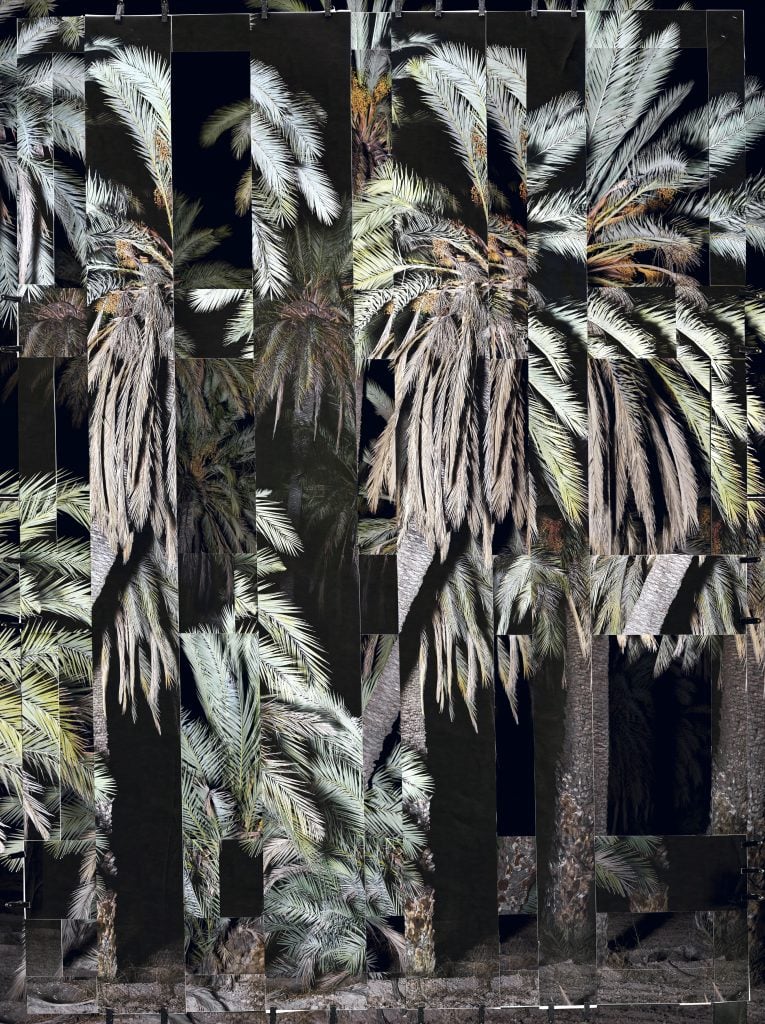
Noémie Goudal, Phoenix VI (2021). Courtesy of Galerie Les Filles du Calvaire, Paris.
Milo’s French counterparts maintain that the country’s photo scene, albeit overlooked, is undergoing exciting developments. “Although photography isn’t at the top right now, and it’s been a while since photographers have been nominated for the Prix Marcel Duchamp, we have a scene of young photographers that’s very rich,” said Loïc Garrier, director of Ceysson and Bénétière in Paris.
The gallery dedicated its stand to women photographers, including Aurélie Pétrel, Tania Mouraud, and ORLAN. “Pétrel is from the young generation who are moving the codes of photography physically and conceptually, revolutionizing the medium,” Garrier said. He added that the younger generation were not making the mistake of producing images in too many editions, which the previous generation had made: “They’re better at controlling their market by making works in small editions.”
Pétrel’s newest pieces comprise architectural images printed on wood and perforated steel, the latter series inspired by the architect Peter Eisenman’s Holocaust Memorial in Berlin. Priced between €10,000 and €20,000 ($11,300–$22,600), her work—already held by the Centre Pompidou—pushes the borders of what photography can be.
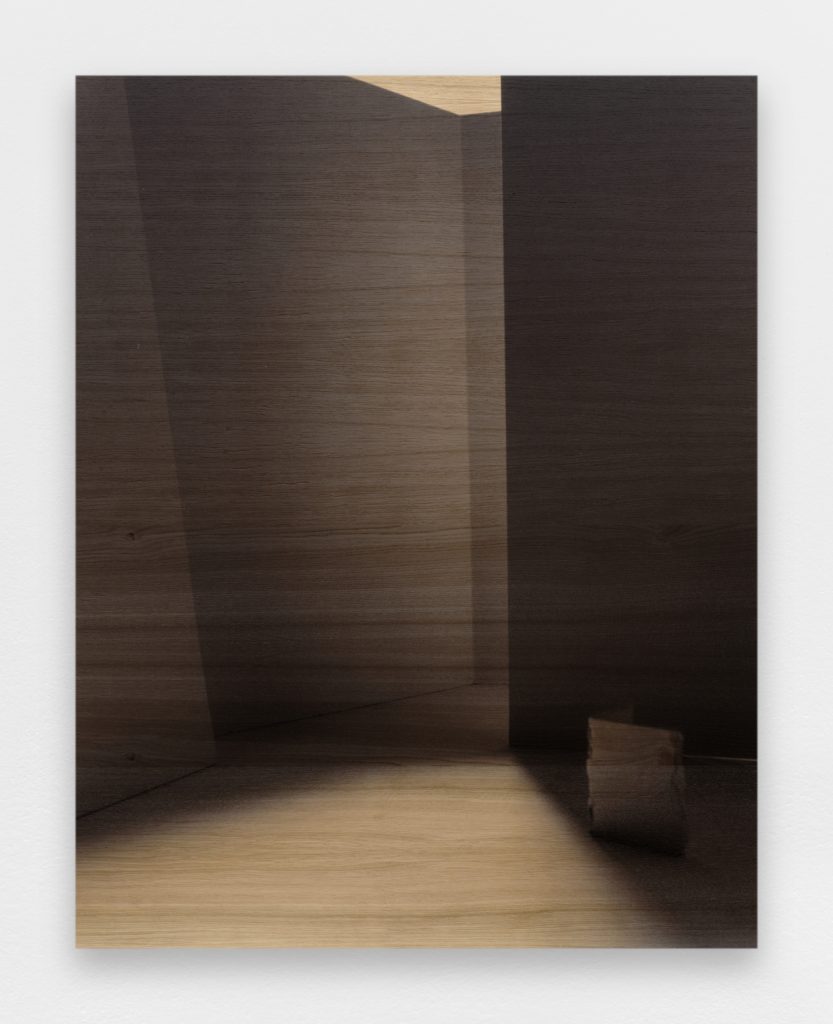
Aurélie Pétrel, Paris #2 Beyrouth (2021). CourtesyC&B©A.Mole.
Noémie Goudal is another young French artist experimenting with photography. At Galerie Les Filles du Calvaire from Paris were two monumental prints of deconstructed palm trees, Phoenix Atlantica IV and VI, priced at €24,000 ($27,200) each. Goudal made nocturnal photographs of the trees in Spain, cut the printed images into strips, and then installed the strips into the landscape before re-photographing the scene to achieve the final image of complex fragmentation.
Other artists are increasingly revisiting early processes, such as the cyanotype, in novel ways, or appropriating disused techniques. Paris’s Galerie Dix9 was showing photographs by Sebastian Riemer, made by appropriating a slide of Kasimir Malevitch’s Black Square and Red Square (1915) that had formerly been used in art-history lessons, for €16,000 each ($18,100).
“It’s no secret that painting is the queen of the art market right now, and for a lot of people painting equals art,” Riemer said. “In terms of materials, painting is the cheapest medium to produce, with the lowest costs for the creator because it’s paint on canvas. There’s a discrepancy in the costs involved on the one hand, and in the selling prices on the other.”
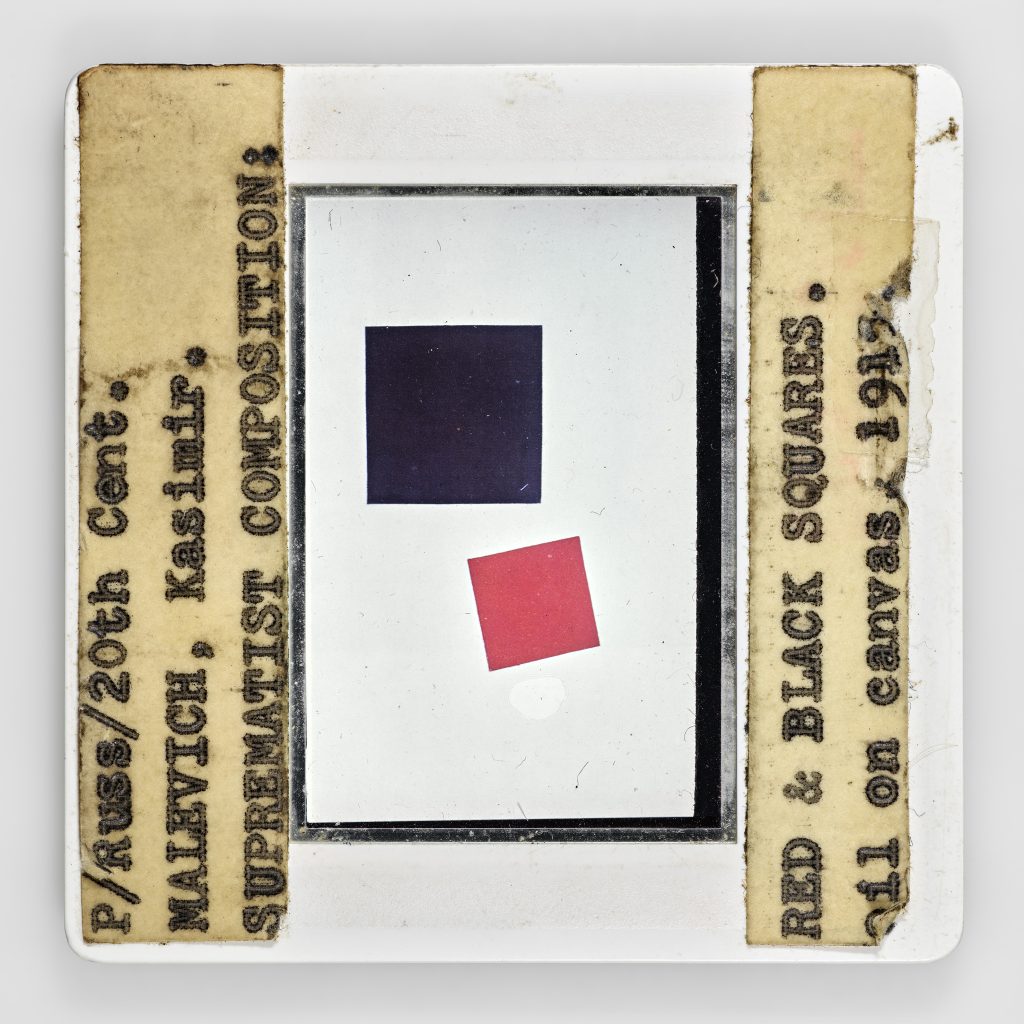
Sebastian Riemer, P/Russ/20th Cent. Malevich, Kasimir. Suprematist Composition: Red and Black Squares. Oil on canvas, 1915. (2019). Courtesy of Galerie Dix9, Paris.
Still, several dealers expressed faith in the market. “The collecting of photography is consistent and steady,” said Aron Gent, owner of Document, from Chicago. He presented a solo booth by Paul Mpagi Sepuya, including a staged self-portrait ($14,000) that also featured other nude male figures photographed through a full-length mirror in his studio. “Most of the people we’re meeting at Paris Photo specifically only collect photography—and, as photography is not taken as seriously in the contemporary art world, this is the time for photographers to stand out,” added Gent, who mentioned he had also met curators from the photography departments of numerous museums.
Lauren Panzo, Pace’s vice president of sales, and senior director Kimberly Jones, have expanded Pace’s photography department after Pace/MacGill Gallery was integrated last January. They argue that photography, while challenging, can be advantageous for collectors. “Photography is always a challenge for contemporary collectors because of the work being editioned, but we find collectors are embracing it more than before,” they said. “Photography also represents the opportunity to acquire pieces by artists like Yoshitomo Nara, who is better known for his paintings and sculpture, at great entry-point prices.”